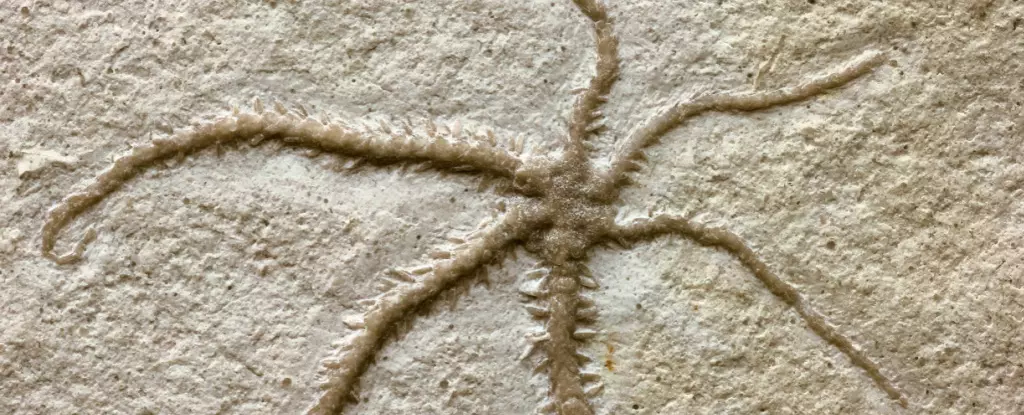The fossil record of Earth contains snapshots of ancient lifeforms that have been petrified over vast stretches of time. Recently, scientists in Germany made a remarkable discovery of a six-armed brittle star fossil that was in the process of regenerating one body half. This exceptional find was unearthed from a limestone deposit in southern Germany, once a deep lagoon with coral meadows and sponge beds. The fossil site now serves as a preserved garden filled with remnants of prehistoric creatures from the late Jurassic period.
Many modern brittle stars and starfish reproduce through a process known as fissiparity, where the organism splits in half and regrows its missing parts. This method, also called clonal fragmentation, results in two identical clones of the original organism. While this reproductive strategy is observed in distantly related starfish and brittle stars, the evolutionary origins of fissiparity were not well understood until the discovery of the six-armed brittle star fossil, Ophiactis hex.
The Ophiactis hex fossil, dated to 155 million years old, provides compelling evidence that clonal fragmentation has deep evolutionary roots in star-shaped echinoderms. Preserved with remarkable detail, the fossil showcases the hook-shaped arm spines of the creature. Named after a fictional supercomputer in a Terry Pratchett novel, this fossil reveals that fissiparity was likely tied to the symmetry of the six-armed body plan of the brittle star.
While skeletons of regenerating brittle stars are relatively common in the fossil record, instances of individuals with a regenerating body half are exceptionally rare. The Ophiactis hex specimen represents only the second known case of such a phenomenon, with the first example dating back to 1851, albeit inconclusive. The scarcity of these fossils underscores the importance of the Ophiactis hex discovery in shedding light on the ancient reproductive strategies of brittle stars.
Despite the significance of the Ophiactis hex fossil, researchers acknowledge the limitations of having only a single specimen. This constraint makes it challenging to determine the exact appearance of the species prior to the regeneration process and whether it originally had six arms or not. The unique nature of this fossil highlights the complexity of unravelling the evolutionary history of ancient organisms and their reproductive strategies.
Through the study of the Ophiactis hex fossil, paleontologists have gained valuable insights into the deep evolutionary roots of clonal fragmentation in six-armed brittle stars. This extraordinary discovery opens up new avenues for research into the reproductive strategies of ancient echinoderms and underscores the importance of rare fossils in understanding the history of life on Earth.


Leave a Reply